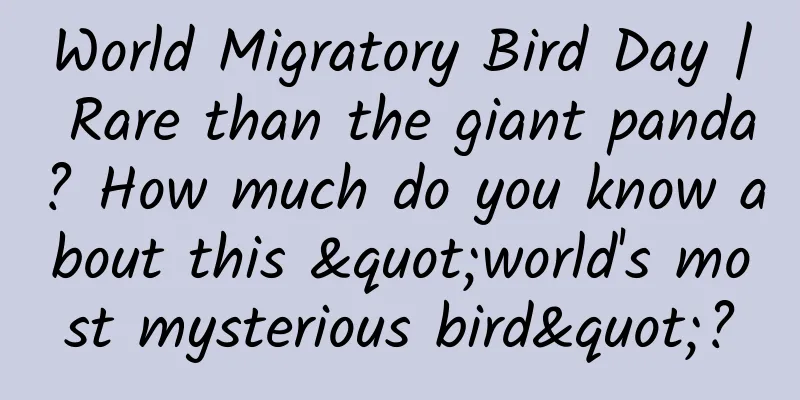Scientists have discovered the smallest dinosaur to date. How was it discovered? How big is it? What is the significance of this discovery?

|
When talking about dinosaurs, many people think of the huge dinosaurs in "Jurassic Park". In fact, there are also small dinosaurs. Recently, a topic about the smallest dinosaur to date has attracted everyone's attention. So, how was the smallest dinosaur ever discovered? How big is it? What is the significance of this discovery? 1. How was the smallest dinosaur discovered so far? What is the significance of this discovery? It was published as the cover article in the latest issue of the internationally renowned journal Nature in the early morning of the 12th Beijing time. The paper describes a new species of bird-like dinosaur, which the researchers identified through a tiny, bird-like skull preserved in amber. The skull is complete and only 7.1 millimeters long behind the beak. This research was jointly completed by Associate Professor Xing Lida of China University of Geosciences, Researcher Zou Jingmei of the Institute of Vertebrate Paleontology and Paleoanthropology, Chinese Academy of Sciences, Researcher Li Gang of the Institute of High Energy Physics, Chinese Academy of Sciences, Dr. Lars Schmitz and Professor Louis Chap of the Natural History Museum of Los Angeles, Professor Ryan McKellar of the Royal Saskatchewan Museum in Canada, and Dr. Yi Qiru of the Beijing Comprehensive Research Center of the Chinese Academy of Sciences. This discovery is of great significance for understanding the evolution of dinosaurs and ancient birds, especially the soft tissue and bone structure of small animals. 2. How big is the smallest dinosaur to date? The smallest dinosaur to date is 6-12 cm long and weighs only 2-6 grams, about the size of a hummingbird. New research suggests that about 99 million years ago, a "super weird" and incredibly small bird-like dinosaur became trapped in a resin cup that eventually hardened into amber, ultimately preserving the smallest dinosaur known to have ever walked the Earth. The dinosaur, called Oculudentavis khaungraae, was light, probably only 0.07 ounces (2 grams), about the weight of a two-dollar bill. The smallest living bird in the world is the hummingbird, and the smallest hummingbird is the bee-sucking honey bee (Mellisuga helenae), which weighs about 1.95 grams and is 5.5 centimeters long. Judging from the size of the skull discovered this time, the dinosaur was shorter than a hummingbird, making it the smallest ancient bird ever discovered and also the smallest dinosaur in history. Back to the fossil itself, the "dinosaur" was named Oculudentavis khaungraae, and its beak is only 7.1 mm long. The article describes that a huge eye socket can be seen on the skull of the Oculudentavis, similar to the eyes of a lizard. The eye socket opening is narrow, allowing only a small amount of light to enter, suggesting an adaptation for daytime activity. Its upper and lower jaws were equipped with a large number of sharp teeth. The authors estimate that there were 29-30 teeth on each side of the lower jaw. It may have fed on small arthropods or invertebrates, which is different from modern birds of similar size, which have no teeth and feed on nectar. |
<<: How to operate a good community?
>>: The battle for attention is escalating: the 100,000+ era is over, the 1 million+ era is here
Recommend
Why did Google develop a new operating system Fuchsia from scratch?
Last week, a bunch of Googlers did something odd: ...
APICloud is the first in the world to perfectly adapt to iOS8
Currently, iOS 8 is still in the DP1 stage, which...
What kind of bad consequences will the proliferation of legendary advertisements bring?
Everyone should be familiar with the legendary ga...
30-Day Book-to-Monetization Bootcamp: Empower yourself with reading, and teach you step by step how to turn the books you read into money
30-Day Book-Monetization Boot Camp: Empower yours...
The era of "traffic-centric" operations is over
1. In fact, 2016 was a very interesting year for ...
Are peanut milk and fruit-flavored milk substitutes for cow's milk? Just a few words difference, but big nutritional difference
Milk is rich in nutrients Not only rich in protei...
Facebook corporate account promotion and operation tutorial!
The Facebook corporate accounts referred to by fo...
Is sleep without dreams boring? Which type of sleep quality is better, dreaming more or less?
People often ask Oh, I dream too much at night. I...
Sony's gaming boss: Virtual reality will be the future of gaming
Fortune magazine wrote in this week's article...
Do hummingbirds have Mulan? To avoid being disturbed by their own kind, some females choose to "dress as men"
Produced by: Science Popularization China Author:...
Want to operate an e-commerce platform? Let’s understand these first
% ignore_pre_1 % Recently, some friends have been ...
10 things to know before buying a mobile VR headset
1. Field of view Some of the most popular domesti...
How to optimize Facebook mobile video ads?
How have Facebook ads worked for you? Do you want...
Kuaishou Blue V operation strategy!
Generally speaking, there are three main purposes...
Review of the ten major events in China's Internet development in 2015
Looking back at 2015, "Internet Plus", ...









